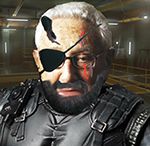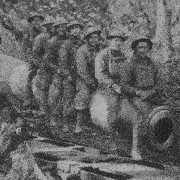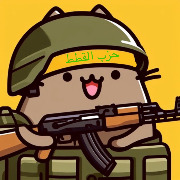|
FlapYoJacks posted:The new narrative is that hostages will be too afraid to speak about how horrible Hamas was to them. lol at the Sun still wanting some front page eye candy next to the child hostage. english people are deranged
|
|
|
|

|
| # ? May 31, 2024 04:09 |
|
crepeface posted:lol you literally say that race was used to justify slavery, a class relation. The reconquista started in the 8th century, Spanish black slavery really kicked off in the 15th century. Sorry if I wasn't clear, that "I guess there is a class element there" referred to the bit about Visigothic (not Vandalic sorry, duh) nobility. As to the blood purity laws, Basques for instance were considered to be universally 'pure' because they were never conquered by Muslims, so not really class based. But again, as far as (structural) racism goes, it's almost fundamentally a function of and expressed through class relations even where it's not directly one. Like let's look at the subject at hand. Palestinians are lumpenized through the colonial racism inherent in the system.
|
|
|
|
shin bet are using facilitated communication techniques to get the true story of hamas abuse from the hostages. this is what is happening when you see these "the sun cited an israeli official quoting an intelligence agent who overheard a family member of one of the hostages" stories.
|
|
|
|
Love this map being thrown around to dispel the shrinking Palestine territory map: The map still shows Israel as a horrible country that steals Palestinian land. It's still insane that they think this makes Israel look better somehow. Do Israelis share that map and think, "Yes, this makes us look good!"
|
|
|
|

|
|
|
|
Retromancer posted:More like the death squad, amirite? No that was the group of CIA agent congress women that were opposed to "The Squad"
|
|
|
|
https://twitter.com/revolutionaryem/status/1729976562051682316
|
|
|
|
FlapYoJacks posted:Love this map being thrown around to dispel the shrinking Palestine territory map: pamitsthesamepicture.jpg
|
|
|
|
Chillgamesh posted:Yeah he fist pumped about it That dude is a fuckin psycho
|
|
|
|
OctaMurk posted:That dude is a fuckin psycho He's a Zionist. No need to repeat yourself.
|
|
|
|
Sancho Banana posted:"Terorrism" is a mostly meaningless word used to demonize whatever violent actor the west doesn't like tbh This is simply not true, you do not have to let the ideas of burgeristan into your conceptual framework. Terrorism is the seeking of political change through fear, usually induced through violence. I said come in! posted:What was the reasoning for removing Hamas from their terrorist list? I mean, you'll get no arguments from me on this one, Hamas is absolutely not a terrorist group imo. Using the above definition, it seems to me likely Hamas has engaged in terrorism. However, and it's a forbidden opinion in the west, terrorism CAN be a legitimate political tool, particularly for oppressed people with little other practical recourse. I don't think Ireland would be 3/4 free without it. Pepe Silvia Browne posted:man we grow corn to make into fuel so that we can export it to mexico to fuel the tractors that are growing the corn for us to eat, the whole thing is stupid as gently caress Is this true? There is some biodiesel made from corn oil (mostly as a byproduct of ethanol production) but I don't think there's enough to be a significant chunk of Mexican tractor fuel use. Dr. VooDoo posted:You know I’ve been wondering. The most blood thirty, loudest group calling for the genocide in Israel also happens to be the ones completely exempt from being on the front lines of said genocide for bullshit religious reasons. Typically while that’s been a point of tension and resentment it hasn’t been a big deal because the IDF typically kills unarmed people. With how bad everything is going for the IDF in Gaza, will that tension grow much more severe and cause internal turmoil in Israel? Perhaps you could post an example of a Haredi person calling for genocide. I haven't seen one.
|
|
|
|
When has Hamas engaged in terrorism? 10/7 was a legitimate military target. There were tanks, APCs, Apache helicopters, and in-uniform IDF soldiers milling about.
|
|
|
|
FlapYoJacks posted:When has Hamas engaged in terrorism? 10/7 was a legitimate military target. There were tanks, APCs, Apache helicopters, and in-uniform IDF soldiers milling about. The soldiers got scared. That's terrorism.
|
|
|
|
FlapYoJacks posted:When has Hamas engaged in terrorism? 10/7 was a legitimate military target. There were tanks, APCs, Apache helicopters, and in-uniform IDF soldiers milling about. Oh I'm not talking about 7/10, but they've done a number of suicide bombings for instance that I can't see how else to frame. Open to being shown to be wrong, but that's my read.
|
|
|
|
mistermojo posted:lol at the Sun still wanting some front page eye candy next to the child hostage. english people are deranged
|
|
|
|
Terrorism is a useful word to describe things like carpet bombing civilians, arresting and torturing infants, poisoning wells, assaulting hospitals, drone strikes, no-knock raids, etc
|
|
|
|
hubris.height posted:probably because they knew with 100% certainty there were no Hamas military anywhere near there and he wasn't at risk. frankly it's pretty bad optics from the IDF, notoriously good at optics username/post combo
|
|
|
|
Weka posted:Oh, I'm not talking about 7/10, but they've done a number of suicide bombings, for instance, that I can't see how else to frame. I am open to being shown to be wrong, but that's my read. Hamas is fighting against an illegitimate occupying country built on slavery and stolen land that participates in apartheid and genocide. Israel, as an occupying force, has no right to self-defense and, therefore, is not able to be a victim of terrorism.
|
|
|
|
terrorism is warfare conducted by the poor warfare is terrorism conducted by the rich the last month has been really instructive in reinforcing just how arbitrary the distinction is.
|
|
|
|
Weka posted:Oh I'm not talking about 7/10, but they've done a number of suicide bombings for instance that I can't see how else to frame. Open to being shown to be wrong, but that's my read. It's impossible to judge Hamas' actions and what is or is not justified based on the values I've cultivated in Flyover, USA.
|
|
|
|
FlapYoJacks posted:Love this map being thrown around to dispel the shrinking Palestine territory map: bottom left map is weird because Palestinians owned something like 5 times as much land as the Jews at least
|
|
|
|
Weka posted:The reconquista started in the 8th century, Spanish black slavery really kicked off in the 15th century. Sorry if I wasn't clear, that "I guess there is a class element there" referred to the bit about Visigothic (not Vandalic sorry, duh) nobility. I def remember reading about an Almoravid ruler that was the son of a Basque concubine, so not entirely true but the region was not conquered as with Northern Spain. The Reconquista ended just when slavery was kicking up and racial categories were being invented during the 15th c. The Spanish ruling class and the Catholic church were incredibly paranoid and the whole concept of "lightening up the race" came from racially eradicating Moorish elements. The conversos and marranos would flee Iberia literally because of the racialization of being a Christian with a Jewish background made them 2nd class citizens and also being hounded by the Inquisition. Unfortunately these same people who were persecuted would be heavily involved in the slave trade in the Netherlands.
|
|
|
|
Weka posted:Oh I'm not talking about 7/10, but they've done a number of suicide bombings for instance that I can't see how else to frame. Open to being shown to be wrong, but that's my read. just say you're deeply uncomfortable with placing rules on people who live in a concentration camp, or when they break free. they'll freak the gently caress out over using the word 'concentration camp' instantly changing the conversation while you get to hold the only morally tenable position
|
|
|
|
Bear Retrieval Unit posted:is she the one with the scumbag dad who was saying how glad he was that his daughter is dead instead of captured? Dude show some decorum, the man hasn’t even buried his child yet
|
|
|
|
interesting to see people twisting themselves around to say "Hamas has not done terrorism" as opposed to "they have, and it is extremely cool"
|
|
|
|
VROOM VROOM posted:interesting to see people twisting themselves around to say "Hamas has not done terrorism" as opposed to "they have, and it is extremely cool" You can't terrorize an occupying force. HTH.
|
|
|
|
VROOM VROOM posted:interesting to see people twisting themselves around to say "Hamas has not done terrorism" as opposed to "they have, and it is extremely cool" “terrorism” implies killing/harming innocent people though you know like bombing hospitals and churches
|
|
|
|
Ringo Roadagain posted:meanwhile the most moral country on earth there may come a point where hamas starts sending their IDF hostages back with horrific injuries and a clear message that its a direct result of the IDF pulling that poo poo
|
|
|
|
What's the deal with the son of Hamas founder that Israeli propaganda keeps wheeling out now and again to say how bad Hamas is?
|
|
|
|
when the us army kept getting popped by roadside bombs in iraq and afghanistan jc denton: “thats terror”
|
|
|
|
I've been trying to catch up on the thread, and just wanted to get into something real quick: First, there are several good books on Glider Infantry and glider operations generally. There's been a renewal of interest and some pretty good scholarship lately. I would agree that Ében-Émael and the Gran Sasso raid, both German operations, were the pinnacle of the form as far as special operations use goes, probably moreso than Pegasus Bridge. Parenthetically, the PRC, DPRK and others, retained gliders well into the Cold War for this purpose. The ability to silently, and accurately, deliver a complete unit to a target without the scattering of a parachute drop remains useful. The mass use of gliders was limited to the Western Allies and was remarkably successful. The reason people know so little about it, and the reason glider forces disappeared so quickly after the war is due to something that has been noted ITT over and over again, the cult of airborne forces, who are exceedingly good at playing Pentagon politics. The US Airborne lobbied so that Glider troops would not share their insignia and uniforms (jump boots etc.), fought against them receiving wings, bonus pay etc. and reduced the size of the Glider component of US Airborne Divisions in 1944. Ironically, the Glider troops seem to have done a better job in achieving their objectives in the immediate 101st and 82nd zones of responsibility in Normandy, because, as I said about the special operations role, they all arrived together, and landed with heavy weapons, including AT guns, howitzers, jeeps, and airborne tanks (which the US Airborne left but the British paras put to use). British Glider troops also got a good reputation for their service in Market Garden and the Rhine crossings. What the Glider troops were not good at, was climbing the ranks quickly enough to secure their place upon demobilization, which is exactly what happened to the Machine Gun Corps after the Great War. Having an institution matters a lot in the military, and whole weapons systems can rise and fall based on office politics, not the test of battle. By way of example, British glider pilots formed the Glider Pilot Regiment, and in the Regimental system, that was a big deal. Not only did it allow them to stick around until 1957, when helicopters and large transport aircraft were better able to replicate their capabilities, but it improved their morale and performance during the war years too. They trained to a very high standard, were organized for their missions after delivering their cargo to the LZ, and in Arnhem in particular, gave a very good account of themselves. US glider pilots seem to mostly have been pilots that washed out of multiengine flight school at some point, were treated accordingly, and after landing seem to have been told to mill around or work their way back to the Allied beaches. They had no pull at all in the USAAF, or US Army generally, certainly not enough to fight for Airborne divisions to retain their glider component after the budget cuts following the war. More importantly, throughout the early Cold War, glider operations were the ones being referenced when military helicopters were being developed, particularly when large airmobile formations were envisioned. The experience of intact formations landing together and making use of the capacity of the larger Allied gliders to land heavy weapons that led to demands for heavy lift helicopters. It took a long time for rotary wing aircraft to match the Horsa and Hamilcar too. Remember that the Wessex could only carry about a dozen troops, the early model Hueys even fewer. The independent airmobile formation, "Air Cavalry" or otherwise, could not deliver to an LZ what the glider formations could until the Chinook came around pretty far into the Cold War. Now, the Soviets went another route and just dropped bigger and bigger things by parachute, so that the VDV, as you all know, has tanks, IFVs, APCs, more support vehicles than you can shake a stick at. It's a bit misleading, because the Soviet Union, and certainly the Russian Federation, never actually had enough large transport aircraft to deliver even one VDV division by parachute in a single day, despite fielding several of them. It's not just their approach that differed though, the Russians have different politics where the Airborne are concerned, since they were able to carve out a place for themselves as an arm of service. This is neither here nor there. Now, aside about gliders notwithstanding, what is the deal with Israeli paratroopers? Well, you can stop right here and read When Failure Thrives: Institutions and the Evolution of Postwar Airborne Forces, which also recaps the above about the US Army Airborne, British (and CW) Paras, and VDV. Paratroops are very, very good at finding political supporting, and carving out institutional niches for themselves. In the Canadian Army today, you basically need three things to progress past Major in a combat arm: Staff College, fluent French, and parachute wings. The same seems to be true just about everywhere. The commander of US forces in Vietnam, Westmoreland, was an artillery officer in WW2, who saw the planned size reduction of the US Army after Korea and quickly transferred to the 82nd Airborne Division. General Petraeus, who you all know and love, made his career in the 82nd, and spent a good deal of it protecting it and its parachute status. Look at any photo of US Army top brass, as you will far more likely than not, see them wearing parachute wings and 82nd AB patches. Before I get into the mechanics of it, I'll say that the Israeli Army is the exact same way. The Israeli Airborne has in actuality been lavishly equipped with APCs since 1982, when the unit was given a more generous allotment of M113s than the regular infantry, many of whom were still on trucks or WW2 era half tracks. They were among the very first provided with Namers, and once again more of them on a per-unit basis, when those rolled around. So, clearly it's not the actual parachute capability that lends the Israeli Army institutional backing, what's going on? This power stems not from their military capabilities but from their (exaggerated) historical significance, reputation, and the symbolic value they hold in Israeli society and military culture. Their status as an elite unit has been sustained over the decades, largely due to strong institutional backing, which has provided them with significant resources and autonomy. This support has enabled them to adapt to new operational requirements while retaining their elite status and significant role within the IDF. Despite their origins and continued identification as airborne forces, the Israeli Paratroopers have effectively transitioned to a mechanized force. Since the 1956 Suez War, there has been a strategic shift towards increased mechanization within the IDF, with the paratroopers being equipped with APCs. This transition reflects a broader trend in Israeli military strategy, emphasizing the importance of mechanized infantry in modern warfare - first because the Armoured corps held all the leadership positions and literally left the infantry behind in 1956, 67 and 73, then because of squishy casualty aversion. "Following the 1973 war, there was a significant expansion and reorganization of the ground forces. The establishment of more armored divisions, including a reserve paratroop division, and the equipping of all infantry units with APCs, including paratroopers, further cemented the transition to mechanized warfare." However, the paratroopers have retained their airborne mystique and identity, demonstrating the enduring power of institutional prestige and tradition in the military, in part because in a conscript military that has effectively been turned into summer camp, as has been pointed out repeatedly ITT, they are the one formation that leans towards regular soldiers. That's because anyone who becomes an IDF regular will gravitate toward units that aren't Mickey Mouse bullshit clown shows, because as in the other countries mentioned up top, jump wings become a promotion requirement, and a career soldier will by definition seek promotion, and also since 1982 the Armoured branch lost a lot of institutional pull because Israel mostly needed dismounted troops to beat up Palestinians. The Paratroops met that last requirement in particular because, being filled to at least partial strength with regulars, they could be used for these occupation duties without call-ups, which Israel desperately needed. Think of them a bit like an internal French Foreign Legion in that sense. Cross-border raids into Lebanon and "real" fighting during the Intifadas required something like the US all-volunteer force, and the Paratroops fit that need. There's a lot more to get in to here, but the gist of it is, the walls and checkpoints have often been manned by reservists, but the Paratroops were considered the only reliable infantry in the IDF - it had nothing to do with their ability to hit the silk. Just like all the SOF teams getting wiped out on Zero Hour this go round, using the Paras has a fire brigade had limitations. For instance, the setbacks experienced during the 2006 Lebanon War, where two parachute battalions were almost wiped out - their operational plan presupposed Hezbollah would run away at the sight of them - "highlighted tactical limitations and the need for adjustments in training and strategy". The IDF being the IDF, these fuckups did not significantly diminish the institutional strength or prestige of the paratroopers. Their resilience underscores how institutional power and historical reputation can buffer military units from the immediate impacts of battlefield failures. So, if someone wants to take a crack at it, the decline of the US and UK Glider forces and the persistence of the IDF paras are two sides of the same coin, where who can best play office politics and who can cultivate a mystique determines what forces, even whole weapons systems and operational concepts, stick around. I'd go further and add that in colonial conflicts, Marines and Paras are the only ones who maintain consistently high morale. The same thing happened to the French in Vietnam and Algeria, the Paras and Royal Marines from Suez through Falklands the the present day, the ARVN, I would guess the US military as well.
|
|
|
|
we are so back
|
|
|
|
wb ff im not reading all of that tho
|
|
|
|
Frosted Flake posted:I've been trying to catch up on the thread, and just wanted to get into something real quick: tane
|
|
|
|
Frosted Flake posted:I've been trying to catch up on the thread, and just wanted to get into something real quick: concerning
|
|
|
|
Frosted Flake posted:I've been trying to catch up on the thread, and just wanted to get into something real quick: Looking into this
|
|
|
|
Frosted Flake posted:just wanted to get into something real quick:
|
|
|
|
ScootsMcSkirt posted:wb ff
|
|
|
|
Ringo Roadagain posted:meanwhile the most moral country on earth Israeli LinkedIn says the broken arm kid was actually beaten by his parents for snitching and/or pally wood. ScootsMcSkirt posted:wb ff
|
|
|
|

|
| # ? May 31, 2024 04:09 |
|
1stGear posted:we are so back a real return to form
|
|
|






































